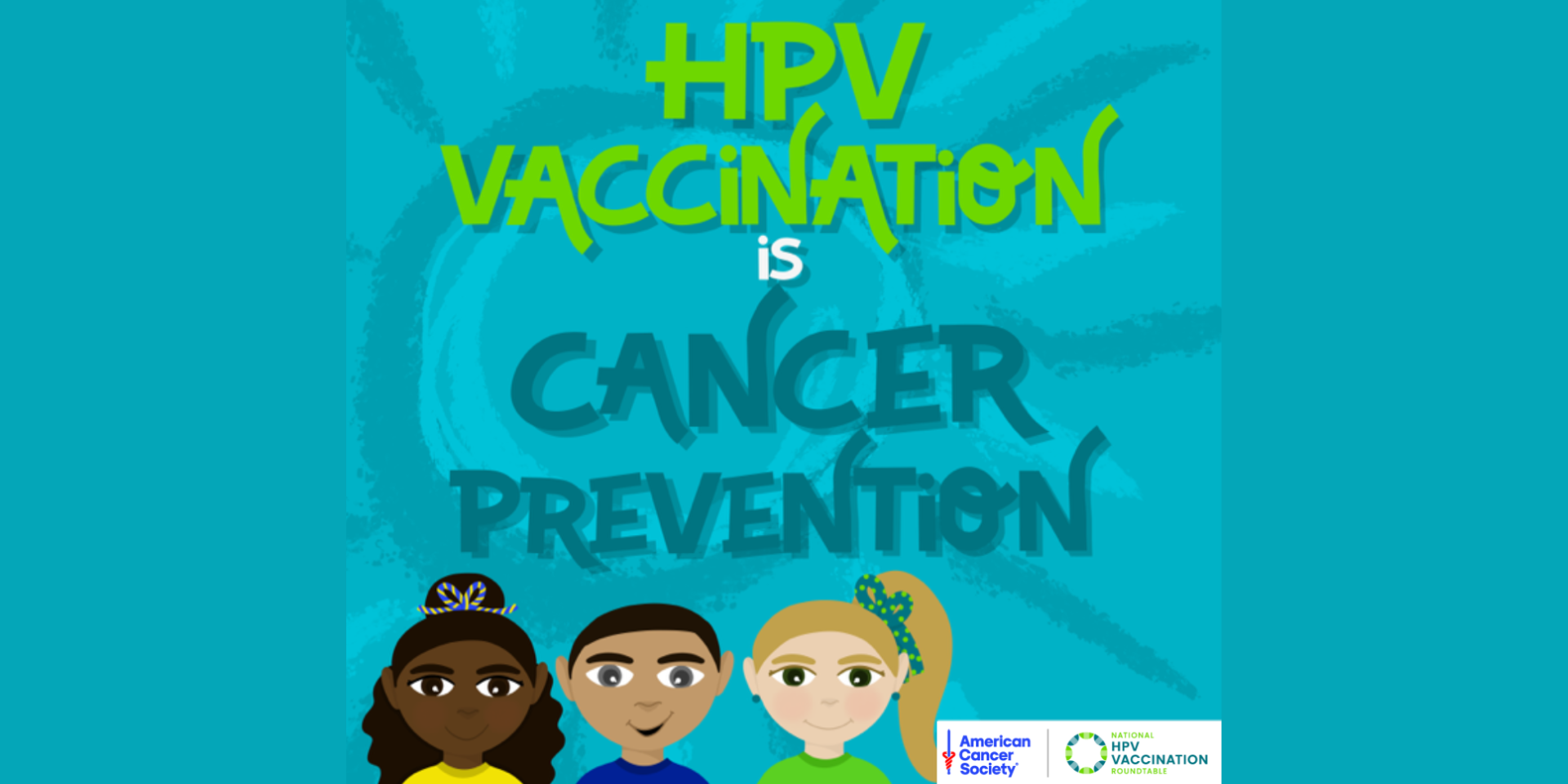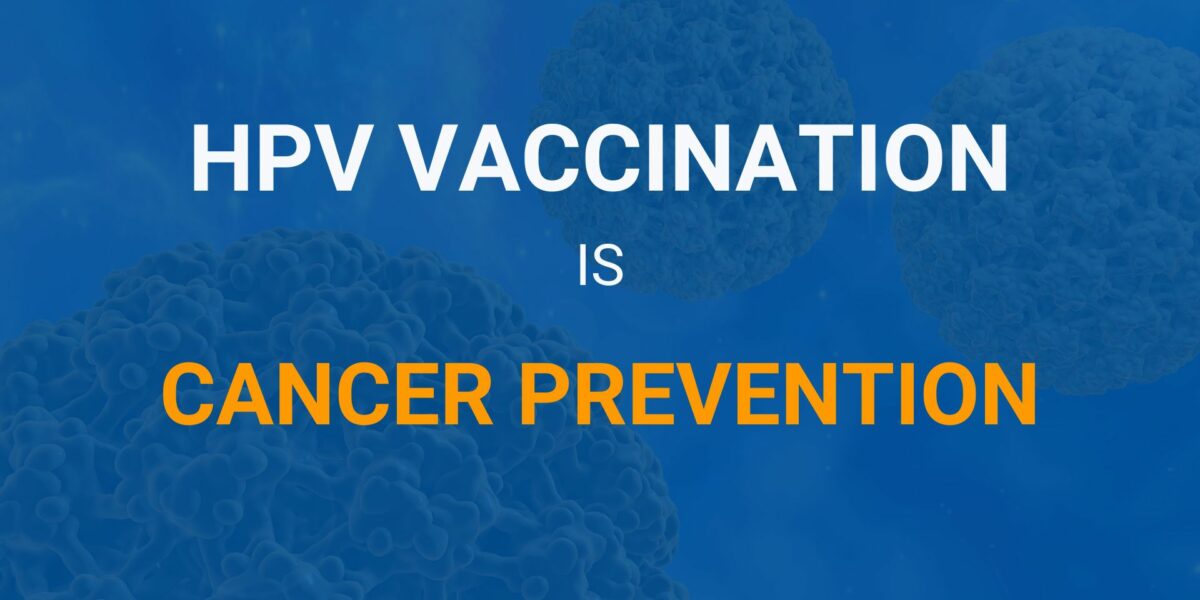
Special thanks to Gabby Darville-Sanders, PhD, Kiara Long, MPH, and Christina Turpin of the National HPV Vaccination Roundtable team at the American Cancer Society (ACS) for this guest blog post during Cervical Health Awareness Month (January), on the importance of HPV vaccination and screening in preventing cervical cancer.

Each January, we are reminded of the progress made in cancer prevention, and the work yet to be done. The faces and stories of those who lost their battle with cancer, and the voices of the survivors, caregivers, and families, remind us of the importance of eliminating human papillomavirus (HPV)-related cancers, starting with cervical cancer.
According to the Centers for Disease Control and Prevention (CDC), about 13 million people in the US will be newly infected with HPV each year. While most HPV infections present no symptoms and can clear on their own, some infections can lead to a cancer diagnosis. HPV can cause cervical, vulvar, vaginal, penile, anal, and mouth and throat cancers. Many HPV-related cancers may not be detected until health problems arise, which underscores the need for HPV vaccination. Although HPV vaccines are a critical tool for protection and prevention, vaccination rates are lower in the US than in other countries.
Cervical cancer is the only HPV-related cancer with a recommended screening test for detection at an early stage, yet many cases still go undiagnosed. While recent data have shown that cervical cancer rates in the US have declined, in 2023, ACS estimated that 13,960 cases of invasive cervical cancer would be diagnosed and about 4,310 women would die from the disease in the US. The current opportunistic approach to cervical cancer screening in the US fails to reach many who are at risk, including people living in low-resource, medically underserved areas. Thus, invasive cervical cancer is strongly linked to socioeconomic, geographic, and/or racial disparities. Annual rates of cervical cancer incidence and mortality in these populations are several times higher than in the general US population and are similar to rates observed in some lower-income countries.
How to Prevent Cervical Cancer
What can we do to help prevent cervical cancer? Here are 2 important steps:
Start HPV Vaccination at Age 9: HPV vaccination prevents more than 90% of cancers caused by HPV when given at the recommended ages of 9-12 years. ACS recommends routine HPV vaccination of 2 doses for boys and girls starting at age 9 years. New research has reinforced the benefits of starting HPV vaccination at age 9; however, teens and young adults age 13 to 26 years who have not been vaccinated or who have not received all recommended doses of HPV vaccines should be vaccinated as soon as possible.
Use Screening for Early Detection: Screening tests offer the best chance to diagnose cervical cancer early, when treatment is most effective. Screening can prevent most cervical cancers by finding abnormal cervical cell changes (pre-cancers) so they can be treated before they become cervical cancer. Cervical cancer testing (screening) should begin at age 25 years. ACS recommends cervical cancer screening with a primary HPV test every 5 years for individuals age 25-65 years who have a cervix and are at average risk of cervical cancer. If a primary HPV test is unavailable, co-testing (HPV testing in combination with a Pap test) every 5 years or screening with a Pap test alone every 3 years is acceptable.
Learn More about Cervical Cancer and HPV Vaccination
The National Foundation for Infectious Diseases (NFID) and ACS and have developed complimentary resources about HPV, vaccination, and cervical cancer:
- 5 Key Steps to Improve HPV Vaccination Rates (NFID): Quick-reference graphic for healthcare professionals
- HPV Social Media Posts and Graphics (NFID): Shareable graphics and sample social media posts
- Start HPV Vaccination at Age 9 (ACS National HPV Vaccination Roundtable): Videos, graphics, core messages, and fact sheets
- Guidelines for the Prevention and Early Detection of Cervical Cancer (ACS): Cervical cancer causes, risk factors, screening, and prevention
- HPV Vaccine Facts (ACS): Facts you should know about HPV vaccines
To join the conversation and get the latest news on infectious diseases, follow NFID and the National HPV Roundtable on X (Twitter), like NFID on Facebook, follow NFID on Instagram, visit NFID on LinkedIn, listen and subscribe to the Infectious IDeas podcast, and subscribe to receive future NFID Updates
Related Posts

The Key to Preventing Cervical Cancer
January is Cervical Cancer Health Month, an important time to raise awareness and empower individuals to protect themselves against this often preventable type of cancer

ID News Round-Up: Bird Flu, COVID-19, HPV, and Norovirus
Read recent news of interest from the world of infectious diseases including insights and explanations on bird flu, COVID-19, HPV, and norovirus …

ID News Round-Up
Advances in infectious disease prevention and treatment have made headlines on COVID-19, flu, HPV, RSV, and more
